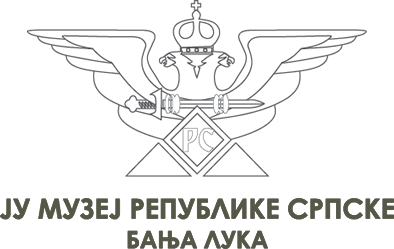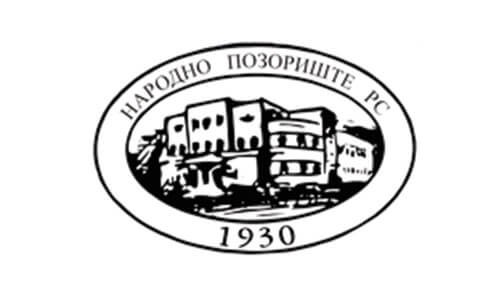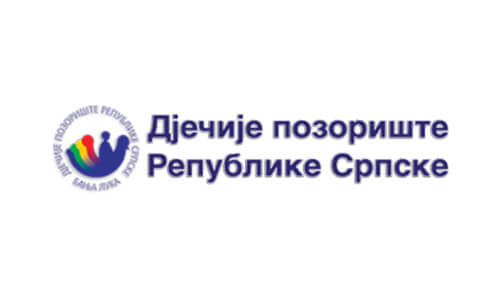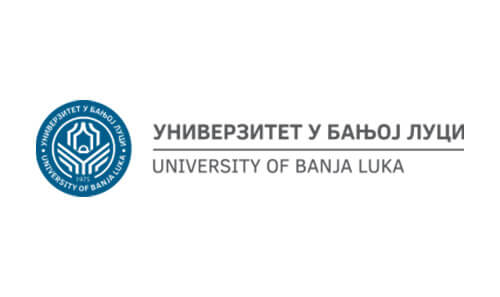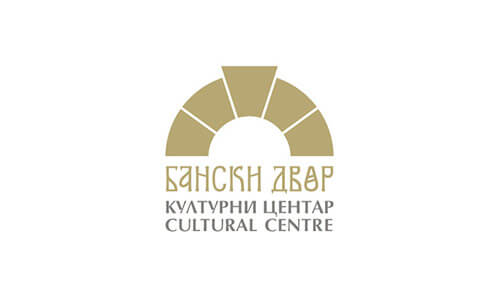
Fire salamander (Salamandra salamandra)
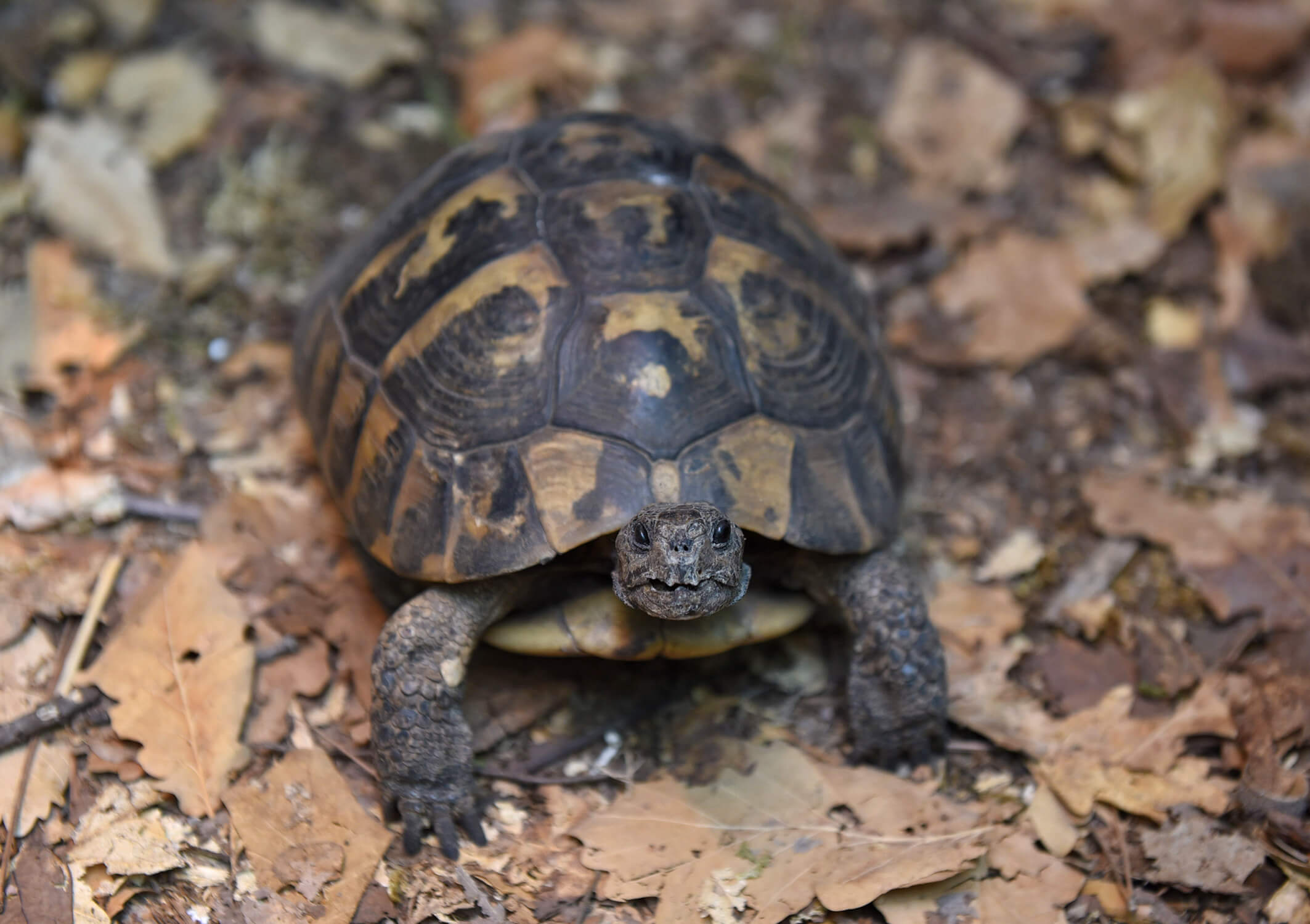 Hermann's tortoise (Testudo hermannii)
Hermann's tortoise (Testudo hermannii)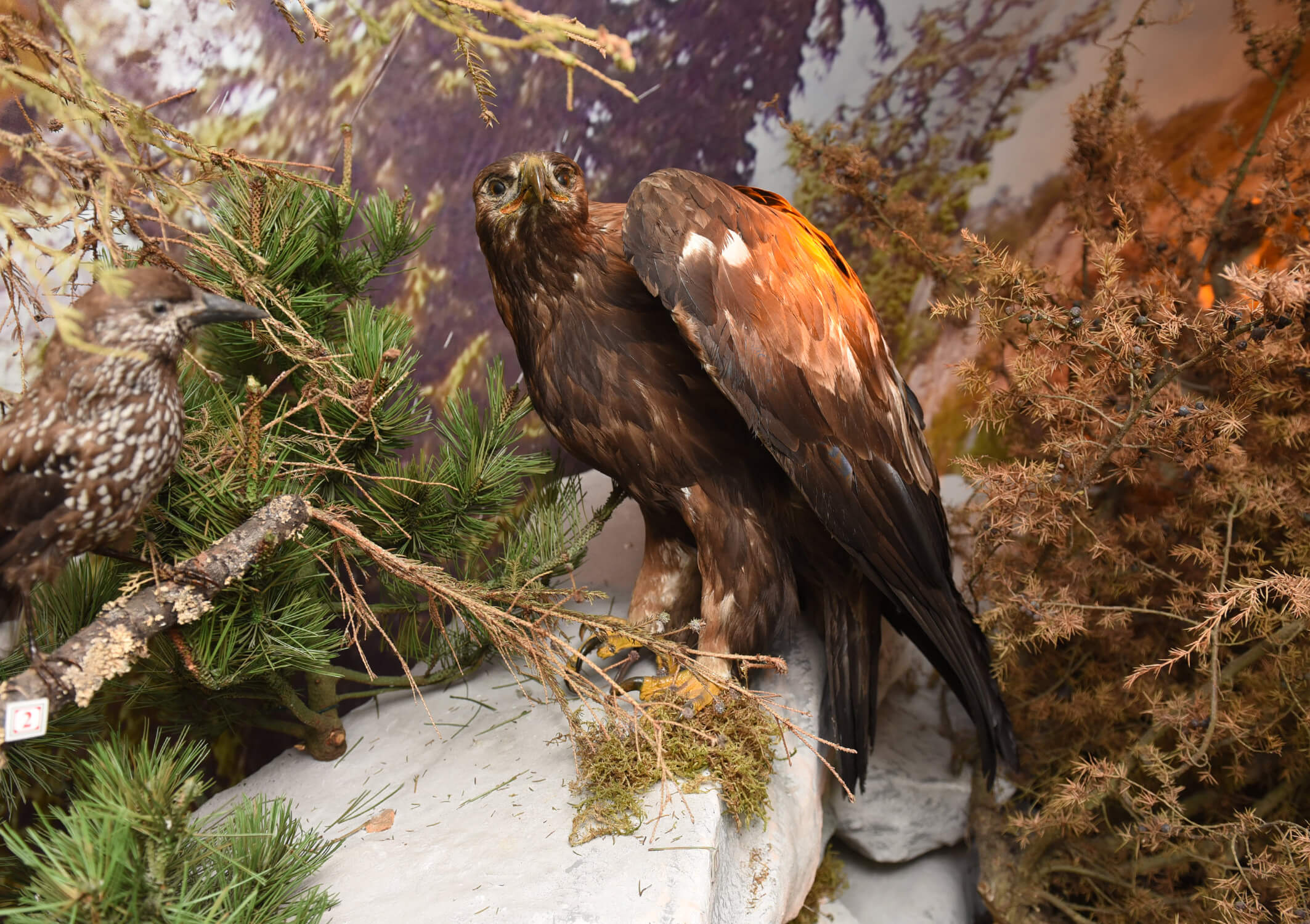 Eurasian goshawk (Accipiter gentilis) with Eurasian golden oriole (Oriolus oriolus)
Eurasian goshawk (Accipiter gentilis) with Eurasian golden oriole (Oriolus oriolus)Vertebrate Zoology Section
The activities of the Vertebrate Zoology Section in the Natural Sciences Department of the Museum of the Republic of Srpska are defined by the Law on Museum Activities and the Museum’s internal regulations and are carried out in accordance with available resources. The department’s primary tasks include collecting, preparing, preserving, scientifically processing, exhibiting, and publishing materials and data on the chordate fauna of the Republic of Srpska. Within its capacity, the department monitors the state of chordate fauna in the Republic of Srpska, including species distribution, ecological status, and endangerment levels with a particular focus on the documentation and inventory of terrestrial vertebrates. Moreover, the Natural Sciences Department collaborates with public media and related scientific institutions and provides services to interested individuals and the general public. The scope of work of the Vertebrate Zoology Section encompasses the entire chordate fauna (Chordata) which includes vertebrates (Vertebrata) - the most numerous subgroup - as well as tunicates (Tunicata or Urochordata) and lancelets (Cephalochordata). The department’s collections are cataloged in the Zoological Collection and are divided into the following subcollections: Fish, Amphibians, and Reptiles; Birds and Mammals; and Anatomical Specimens. A portion of the chordate specimens is also part of the Adriatic Sea Subcollection, which, in addition to these specimens, contains samples of 84 species of marine invertebrates (Invertebrata). The department also manages a section of the Photo Documentation collection. The department currently holds a total of 1,430 registered items in the Zoological Collection, including specimens, exhibits, casts, and models.
- CURATOR
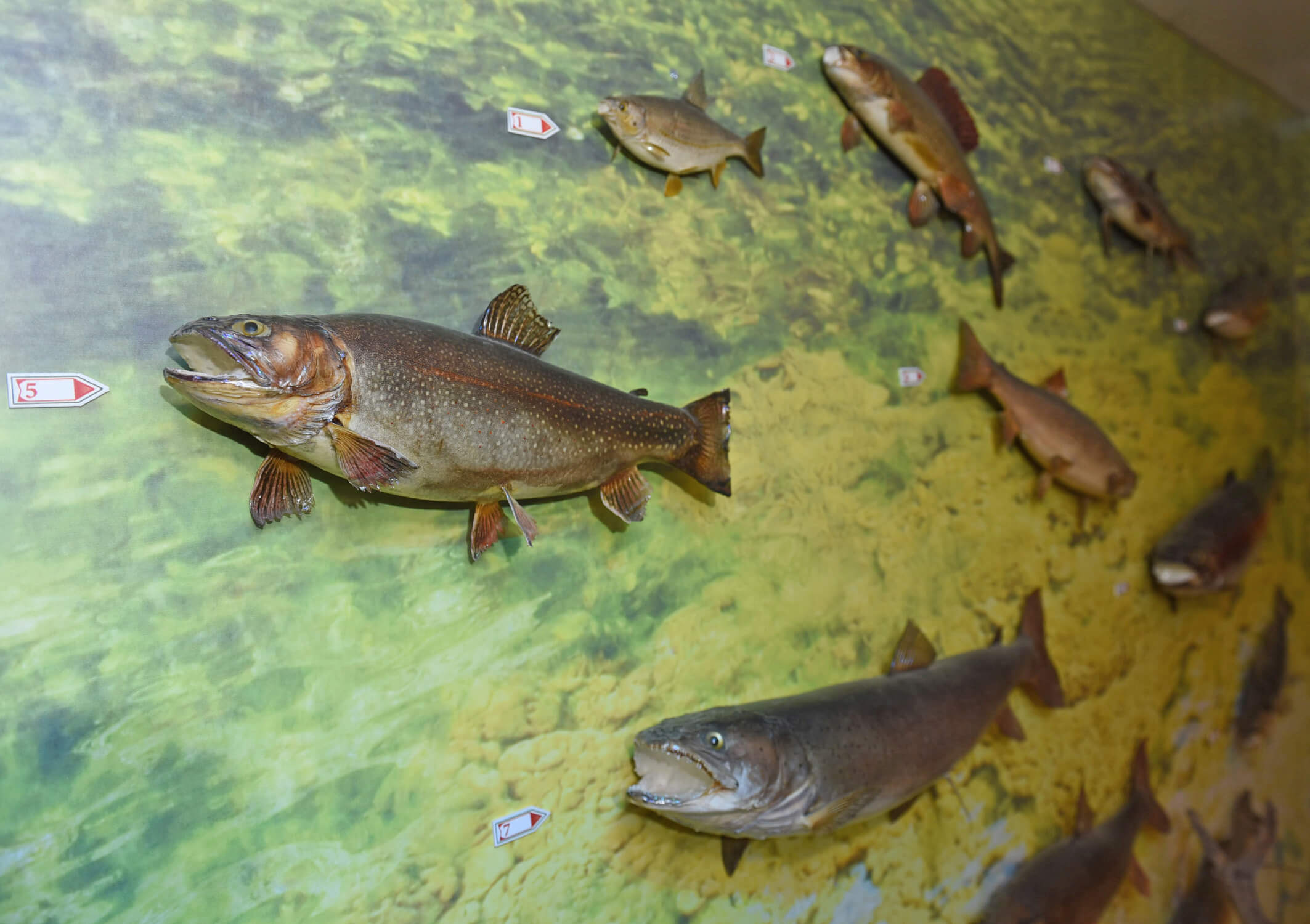 Freshwater fish exhibits on a panel, part of the permanent exhibition
Freshwater fish exhibits on a panel, part of the permanent exhibitionAdriatic Sea Subcollection
This subcollection includes representatives of four chordate classes: ascidians (Ascidiacea) - 2 species, salps (Thaliacea) - 1 species, cartilaginous fish (Chondrichthyes) - 4 species and ray-finned fish (Actinopterygii) - 21 species. Nine specimens are mounted on glass slides and can be used as exhibits, while the remaining specimens are intended for educational purposes.
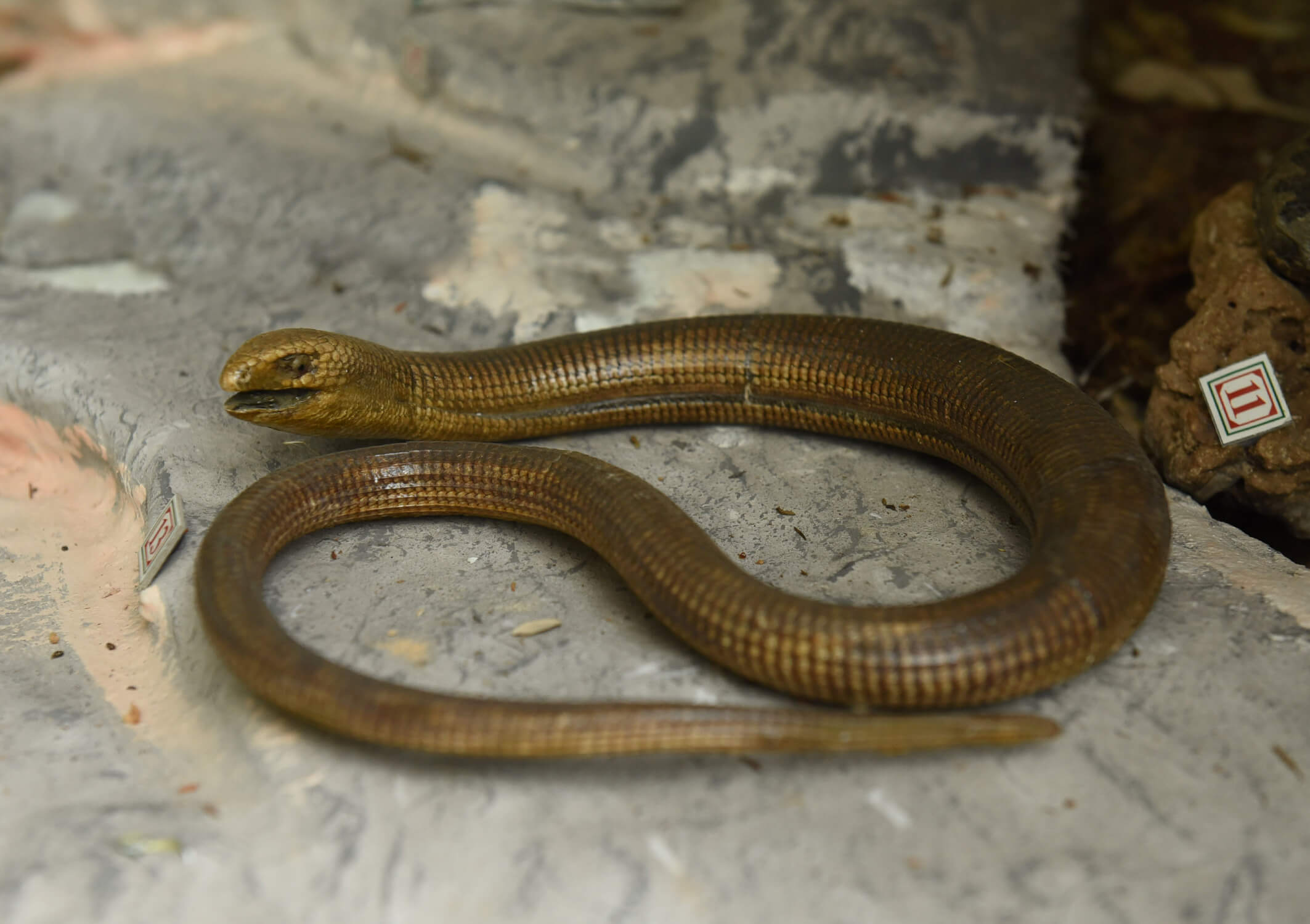
European glass lizard (Pseudopus apodus)
Fish, Amphibians, and Reptiles Subcollection
This subcollection includes four chordate classes, all belonging to the subphylum Vertebrata: lampreys (Cephalaspidomorphi) - 1 species, ray-finned fish (Actinopterygii) - 45 species, amphibians (Amphibia) - 14 species and reptiles (Reptilia) - 22 species. A total of 115 specimens have been prepared as exhibits and are ready for display.

Eurasian goshawk (Accipiter gentilis) with Eurasian golden oriole (Oriolus oriolus)
Birds and Mammals Subcollection
This subcollection includes two classes of vertebrates: birds (Aves) - 101 species and mammals (Mammalia) - 22 species. All bird specimens have been prepared as exhibits, except for four study skins. Among mammals, 17 specimens have been prepared for exhibition.
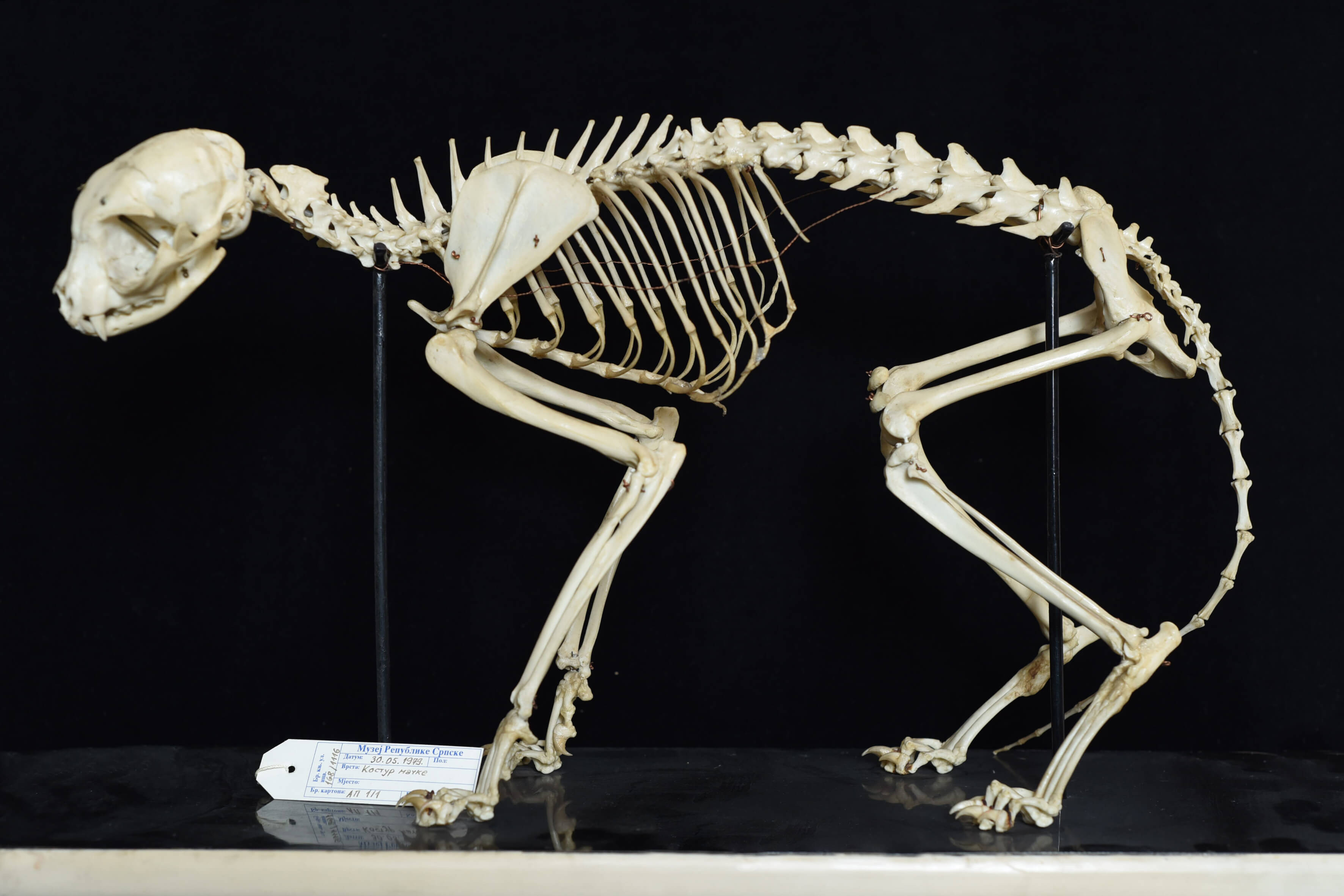 Anatomical cat skeleton
Anatomical cat skeletonAnatomical Specimens Subcollection
This subcollection comprises a total of 15 items, each representing an inventory unit, including: four preserved and mounted skeletons - frog, snake, pigeon, and cat; six formalin-fixed, mounted specimens of vertebrate internal organs - common carp, green frog, Balkan green lizard, grass snake, pigeon, and rat; five embryological specimens, fixed and mounted in formalin - trout, chicken, squirrel, mouse, and otter. All specimens have been prepared for exhibition but are primarily intended for educational purposes.
